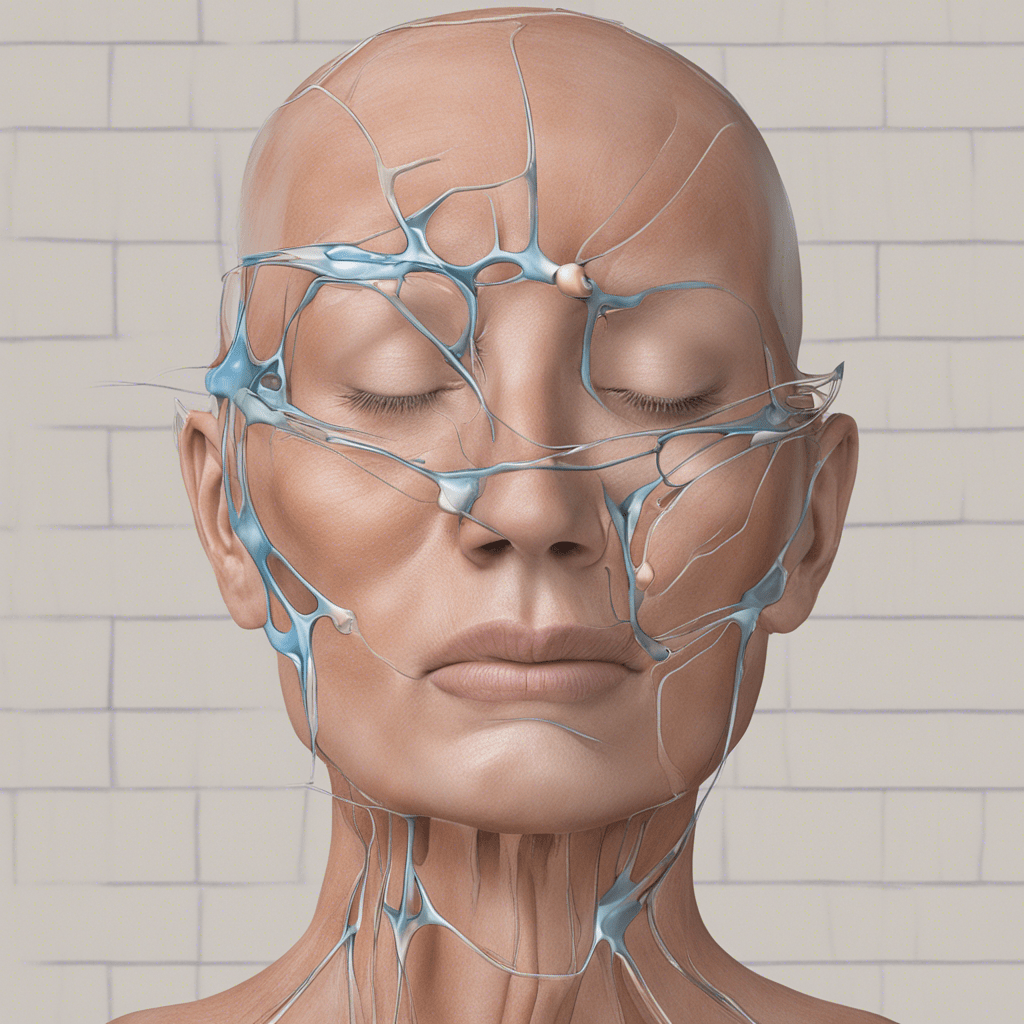Improve Your Health with Effective ESWT Therapy Treatment Options
Impetus behind increasing curiosity towards ESWT Therapy
Extracorporeal Shockwave Therapy, more commonly known as ESWT, is experiencing a steady rise in recognition and popularity. Amid modern health trends focusing on non-invasive and alternative therapies, ESWT has found its niche as therapy that can offer significant advantages. Renowned for its effectiveness in treating various musculoskeletal conditions, ESWT has become a beacon of hope for many.
Brief understanding of how ESWT therapy works
Unlike traditional surgical approaches, ESWT treatment employs the use of shockwaves to stimulate the body's inherent healing process. The therapy involves delivering low-energy sound waves directly into the area of discomfort or injury. The administered shockwaves then trigger a series of biological responses at the cellular level. This process promotes revascularization, enhances blood supply, activates cell proliferation and accelerates the healing process. As a non-invasive ESWT technique, this therapy circumvents many risks associated with surgical interventions, making it an attractive treatment option for many patients.
Outline of the focus points for the rest of the essay
As we delve deeper into the journey of understanding ESWT therapy, we'll uncover its multitude of benefits, shedding light on how it has become an instrumental tool in physical therapy and rehabilitation. We'll explore the specific conditions it targets such as heel pain, tendinitis, and plantar fasciitis, explaining how ESWT treatment for these ailments has shown impressive results. Additionally, we'll expose you to the potential of orthopedic ESWT treatment, providing insights into its applications in treating tennis elbow, Achilles tendinitis and more.
The exploration will then extend to the comparison with other treatment methods, aiming to highlight the unique strengths of ESWT. This includes contrasting it against therapeutic ultrasound, a commonly used modality in physiotherapy. Finally, we'll draw conclusions based on practical cases and latest research which underpin the efficacy of ESWT. Keep reading to uncover the world of ESWT therapy, adding a valuable tool to your arsenal in the journey towards optimal health.

In-depth understanding of ESWT treatment
Origin and evolution of ESWT therapy
ESWT, or Extracorporeal Shockwave Therapy, has a fascinating history that dates back to the mid-20th century. It was originally developed to break down kidney stones without the need for invasive procedures. However, as medical practitioners began to observe the side-effects of shockwave treatment, they realized it stimulated healing factors in tissues. This discovery marked the beginning of ESWT's use in various fields of medicine.
The ESWT treatment procedure evolved significantly over the decades. Today, it is considered a cutting-edge non-invasive technique for treating a variety of musculoskeletal conditions. It has a particularly important role in orthopedic ESWT treatment, often used for disorders such as tendinitis and plantar fasciitis. Additionally, ESWT has been increasingly incorporated into rehabilitation and physical therapy ESWT protocols to enhance the healing process.
Modern breakthroughs in ESWT research have shown its effectiveness in pain management. ESWT for pain has become more mainstream as awareness of the treatment widens and corresponding technologies advance. Today, ESWT finds its successful application in various fields such as sports medicine, orthopedics, and physical therapy.
Clinical workings of ESWT therapy
The clinical workings of ESWT are based on the delivery of shockwaves to the affected area in the body. These shockwaves are high-energy sound waves generated outside the body - hence the term 'extracorporeal'. These are precisely directed onto the area of pain or injury through a hand-held device. The specific parameters of the treatment, like the intensity and frequency of the waves, can be adjusted depending on the condition being addressed and the individual patient's needs.
A typical ESWT treatment procedure starts with a thorough assessment of the patient's condition conducted by a trained professional. The actual therapy session involves the use of the device, transmitting shockwaves that penetrate the targeted area, which triggers natural healing processes on the cellular level.
ESWT therapy can address a wide range of conditions. It is widely used as therapy for tendinitis ESWT, particularly in cases that are resilient to traditional treatment methods. From plantar fasciitis and tennis elbow to heel pain, the reach of ESWT is broad and effective.
Benefits of ESWT
From a medical perspective, the benefits of ESWT are plentiful. First off, its non-invasive character avoids many risks associated with surgery. This therapy also promotes natural healing processes by enhancing blood flow, aiding in materializing faster recovery times. Furthermore, it is versatile enough to treat a wide range of musculoskeletal conditions hence its growing place in the orthopedic and physical therapy circles.
Viewed from a patient's perspective, ESWT offers a quick and virtually painless treatment option that requires little to no downtime. Many patients find symptom relief within just a few sessions of ESWT therapy. Moreover, as the process is non-surgical, it suits those looking for alternatives to more invasive procedures. The convenience and minimal side-effects of ESWT make it a popular choice among patients navigating chronic pain or musculoskeletal health issues.

Role of ESWT treatment in improving health
Application in pain management
ESWT has significantly impacted the field of pain management, offering groundbreaking developments in the treatment of both acute and chronic pain. The diverse types of pain treatable with ESWT range from joint discomfort in conditions like tennis elbow and arthritis, to soft tissue pain associated with tendinitis, plantar fasciitis, and heel pain. Non-invasive ESWT technique even caters to managing sophisticated problems like erectile dysfunction disorder, further broadening its scope.
The success rates and statistics endorsing ESWT in pain management are encouraging. Numerous studies lend credibility to ESWT's effective application in orthopedics, with an approximately 70-80% success rate reported in the treatment of conditions like plantar fasciitis and tennis elbow. The radial shockwave therapy ESWT compound these positive outcomes, offering a promising outlook for ESWT's future in this field.
Apart from research and studies, patient testimonials reflect real-life evidence of ESWT's efficacy. Countless accounts speak to the reduced pain, improved mobility, and enhanced quality of life following ESWT treatment.
Utility in promoting bone and tissue healing
ESWT's unique capability to promote bone and tissue healing lies in its ability to trigger a biological response within the body. The treatment procedure initiates a cascade of events at the cellular level, which leads to enhanced blood flow in targeted areas, encouraging swifter and more efficient healing.
To reinforce this scientific explanation, numerous use-cases and studies validate ESWT's healing properties. For example, a study published in The American Journal of Sports Medicine reported an accelerated healing process in athletes suffering from tendinopathies following ESWT treatment. Even challenging cases, where standard methods fail to deliver results, substantial improvement has been observed with ESWT therapy.
When compared against traditional methods, ESWT offers a distinct advantage. Unlike Therapeutic Ultrasound, for instance, ESWT therapy is not reliant on heating tissues. Instead, it uses the body’s mechanical response to the shockwaves, which is believed to be a safer and more natural way of promoting healing.
Our ESWT Intellect Mobile 2 Device is the state of the art product in ESWT therapy, you can buy one here:
Impact on overall health and wellness
The ESWT treatment’s ultimate contribution extends beyond remedying specific ailments to enhancing an individual's overall health and wellness. This is because the benefits of ESWT therapy are not isolated incidents but contribute to a holistic wellness journey.
The link between ESWT treatment and enhanced wellbeing is particularly palpable when considering the reduction of pain and restoration of physical function. These improvements often lead to increased activity levels and a return to normal daily activities, which can result in weight loss, better cardiovascular health, and overall improved physical health.
Finally, the interplay between relief from physical pain and mental health is crucial. Chronic pain, limited mobility, and the associated stress and anxiety can take a toll on mental health. ESWT, by reducing physical discomfort and limitations, not only addresses the physical but also mental wellbeing. Patients often report lower stress levels and an overall sense of improved quality of life post ESWT therapy.

Practical aspects and considerations of ESWT therapy
Cost and accessibility
While ESWT offers an impressive array of benefits, it's worth considering practical aspects such as cost and accessibility. General pricing structure for ESWT treatment can vary significantly depending on various factors, including location, severity of the condition, and the number of sessions required.
As for insurance considerations, some insurance providers may cover ESWT therapy, especially for conditions like plantar fasciitis where ESWT has been proven effective. However, insurance coverage is not universal and varies by provider, plan, and the specific medical condition. It's therefore advisable to contact your insurance company to verify coverage before initiating therapy.
In terms of global availability, ESWT therapy is offered by orthopedic clinics, physical therapy centers, and some hospital orthopedic departments across the globe. From pain management centers in the U.S. to orthopedic clinics in Europe and rehab therapy centers in Asia, accessing ESWT services has become comparatively convenient.
Potential side effects or risks
Like any medical treatment, ESWT comes with potential side effects and risks. However, given its non-invasive nature and proven safety record, these are generally minimal and short-term. Patients may experience temporary symptoms such as redness, swelling, or minor pain in the treated area post-procedure, but these typically resolve within a few days.
Long-term implications of ESWT therapy are largely beneficial, promoting healing and reducing pain. In rare cases, people may experience continued discomfort or tenderness, but these typically improve over time with rest and over-the-counter pain relievers.
To mitigate any potential issues, it's critical to follow your practitioner's post-treatment guidelines, such as refraining from strenuous activities for a specific period or applying ice to alleviate temporary discomfort. Most importantly, communicating any concerns or side effects to your provider ensures issues are addressed promptly and appropriately.
Choosing your ESWT therapy provider
Selecting the right ESWT therapy provider can influence your treatment experience and outcomes significantly. First, consider the practitioner's qualifications and experience in delivering ESWT, as expertise in operating the device and understanding the technique can impact the treatment's effectiveness.
Another important criterion is the provider's experience in treating your specific condition. Specialist clinics dealing with orthopedic ESWT treatment or providing physical therapy ESWT should preferably be chosen for conditions like tennis elbow, tendinitis, or plantar fasciitis.
Finally, never underestimate the value of an open and clear conversation with the provider. An established practitioner should accommodate your enquiries about the ESWT treatment procedure, its benefits, potential side effects, and expected outcomes. The right therapy provider should make you feel comfortable and confident about your ESWT journey.
Recapitulation of the importance of ESWT in health enhancement
In this comprehensive exploration of Extracorporeal Shockwave Therapy or ESWT, we have renovated various facets of this leading-edge treatment option. Born out of a desire for non-invasive, safe, efficient therapies, ESWT has proven to be a game-changer, particularly in pain management and musculoskeletal rehabilitation. From treating conditions like plantar fasciitis and tennis elbow, to playing a critical role in orthopedic and physical therapy regimes, ESWT has carved a firm position in contemporary healthcare.
A key aspect of ESWT's charm lies in its scientifically grounded workings. Offering a unique healing modality, ESWT uses shockwaves to trigger the body's natural healing mechanisms. This technique accentuates the biological attributes of the treatment, establishing it as a preferable alternative to many traditional, often invasive methods. What's more, the therapy addresses a wide spectrum of conditions, proving its versatility and dynamism in the medical arena.
The numerous benefits of ESWT extend beyond the direct medical advantages. With a focus on enhancing the individual's overall health and wellbeing, ESWT's impact on overall physical and mental health is substantial. The reduction in pain and the improvement in physical function coupled with the ability to return to regular activities constitutes a treatment that truly enhances an individual's quality of life.
Encouraging personal research and consideration for ESWT therapy as a health improvement option
As with any medical intervention, making an informed decision is paramount. Especially in the case of ESWT, understanding its utilities, practical elements, and potential risks form a key part in considering it as a viable treatment option. Therefore, personal research to understand the therapy, coupled with a thorough discussion with a healthcare provider, forms a crucial part of the ESWT journey.
Given the prominence of ESWT in contemporary physical therapy and orthopedic treatment, considering its applicability to personal health situations is well worth the effort. Its potential in managing pain, improving mobility, assisting in rehabilitation, and enhancing overall well-being is an avenue worth exploring.
The focus on non-invasiveness, coupled with its evidence-based effectiveness and versatility in managing a wide range of conditions, makes ESWT a worthwhile option to incorporate into health and wellness strategies. Hence, whether you are navigating chronic pain, dealing with skeletal issues, or simply interested in exploring alternative therapies, embarking on the ESWT journey might just be the key to unlocking improved health and well-being.

